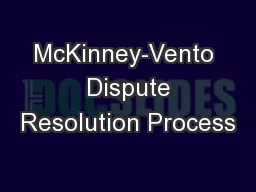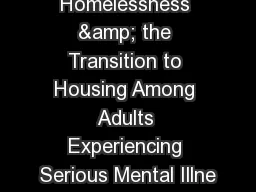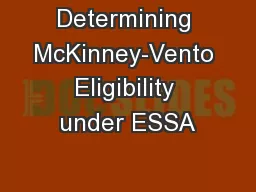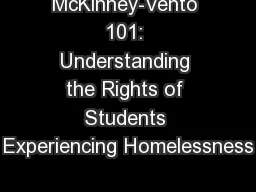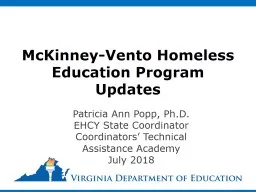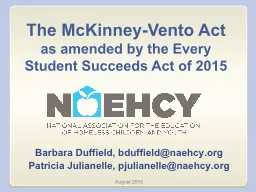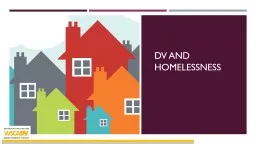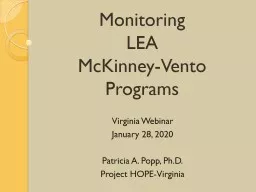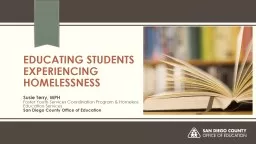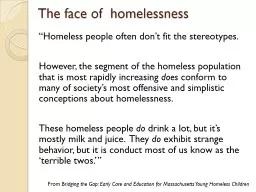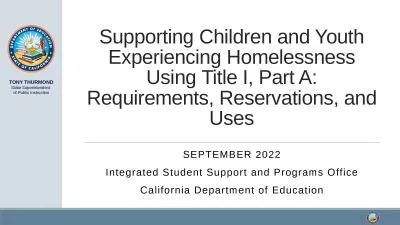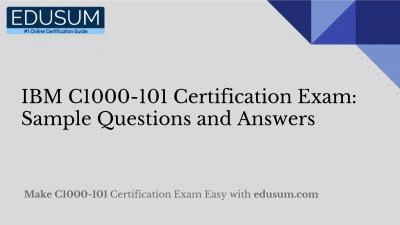PPT-McKinney-Vento 101: Understanding the Rights of Students Experiencing Homelessness
Author : kittie-lecroy | Published Date : 2019-06-29
National Center for Homeless Education NCHE httpncheedgov homelessserveorg NCHE is the US Department of Educations technical assistance center for the federal Education
Presentation Embed Code
Download Presentation
Download Presentation The PPT/PDF document "McKinney-Vento 101: Understanding the Ri..." is the property of its rightful owner. Permission is granted to download and print the materials on this website for personal, non-commercial use only, and to display it on your personal computer provided you do not modify the materials and that you retain all copyright notices contained in the materials. By downloading content from our website, you accept the terms of this agreement.
McKinney-Vento 101: Understanding the Rights of Students Experiencing Homelessness: Transcript
Download Rules Of Document
"McKinney-Vento 101: Understanding the Rights of Students Experiencing Homelessness"The content belongs to its owner. You may download and print it for personal use, without modification, and keep all copyright notices. By downloading, you agree to these terms.
Related Documents


